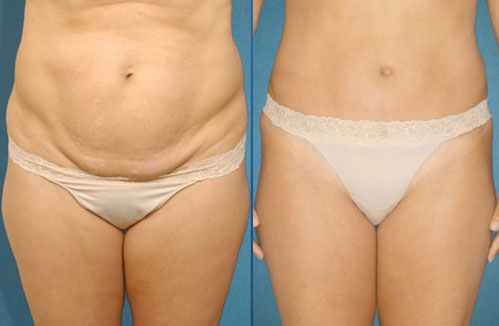Liposuction


Liposuction continues to be one of the foundation plastic surgery procedures. Its flexibility and potential for adaptive techniques means it can address a range of concerns about stubborn pockets of fat almost anywhere on the body. Dr. Brent is proud to perform liposuction in Beverly Hills for patients who want to sculpt a defined, elevated figure for a body they love. Visit his centrally located plastic surgery center today to start on achieving a refined, sculpted body.
What Is Liposuction?
Liposuction removes pockets of fat from target areas of the body. While diet and exercise are essential to a healthy weight, many patients are frustrated to find that lifestyle alone is not always enough to achieve their body goals. Liposuction allows you to receive the results you deserve by removing fat that is unresponsive to your lifestyle improvements. The procedure works by liquifying target fat cells and suctioning them from the body. However, this is more than simply vacuuming away unwanted fat. To see natural results, you need a physician who understands the interplay of fat with other tissues. He needs to know what fat to remove (and in what amounts) and what fat to sculpt.
Table of Contents
The Liposuction Procedure: At a Glance
- Duration: 1 to 4 hours, depending on complexity
- Anesthesia: Local, sedation, or general anesthesia
- Experience: Pain-free surgery
- Downtime: about 1 week average
- Type of Procedure: Cosmetic, outpatient
- Target Areas:
- Stomach
- Waist
- Hips
- Flanks
- Breasts
- Thighs
- Buttocks
- Arms
- Cheeks
- Neck
Procedure Overview: What to Expect
What Is the Recovery from Liposuction Like?
- Personal health and recovery speed
- Complexity and type of procedure
- Amount of fat removed
- Following post-procedure instructions
What Is Liposculpture?
Liposculpture takes technology similar to that used in liposuction, but wields it differently. Rather than just focusing on removing fat from problem areas, your surgeon will remove the fat, purify it, and then place it back into the body in areas where you want to create a more appealing curve. The buttocks are a common candidate for redistribution, as the added fat can be used to form a more voluptuous derrière. Unfortunately, liposculpture isn’t right for everyone.
To be effective, liposculpture requires that the patient has good skin elasticity. As a result, ideal candidates are near their ideal weight and tend to be younger, non-smokers without noticeable sun damage. Patients with darker skin tones also tend to have greater elasticity. Unfortunately, if the skin has been damaged or is already experiencing sagging, then liposculpture may not be appropriate for you. To be sure, talk with your local board-certified plastic surgeon.
What Is Liposculpture?
Liposculpture takes technology similar to that used in liposuction, but wields it differently. Rather than just focusing on removing fat from problem areas, your surgeon will remove the fat, purify it, and then place it back into the body in areas where you want to create a more appealing curve. The buttocks are a common candidate for redistribution, as the added fat can be used to form a more voluptuous derrière. Unfortunately, liposculpture isn’t right for everyone.
To be effective, liposculpture requires that the patient have good skin elasticity. As a result, ideal candidates are near their ideal weight and tend to be younger, non-smokers without noticeable sun damage. Patients with darker skin tones also tend to have greater elasticity. Unfortunately, if the skin has been damaged or is already experiencing sagging, then liposculpture may not be appropriate for you.
Downtime: What Is It and How Long Does It Last?
Downtime means taking time away from work and your daily routine, including all physical activity. For mild liposuction procedures, patients can expect about 1 week of downtime and can return to light activity within 2 weeks. For more involved liposuction (or combined with other surgery), downtime typically lasts about 2 weeks. In either case, the most important factor is not to rush through downtime. Give your body the time it needs to fully recover, and you will thank yourself for it. A smoother recovery means better results in the long run.

FAQs
Is Liposuction Right for Me?
Keep in mind that while this procedure removes fat, it is not a weight-reduction procedure. Yes, patients will look and feel lighter after surgery. But the main goal is to push you the final distance to eliminate stubborn fat. The safest lipo procedures are those that remove targeted amounts of fat, focusing on sculpting the body rather than weight loss.
How Much Fat Can Liposuction Remove?
While liposuction can remove substantial amounts of fat, it is important to remember this is not a weight-loss procedure. The American Society of Plastic Surgeons recommends that patients be within 30% of their target weight before proceeding with liposuction. Some lipo techniques can remove more fat than others, which can be explored during your consultation. However, it works best for individuals who want to take the final few steps in their weight-loss process by clearing away the remaining stubborn fat.
What liposuction techniques are available?
- Traditional Liposuction: Uses negative pressure or vacuum suction to suck out the fat. Tubes (cannulas) have a relatively large diameter and remove fat quickly.
- Liposculpture
- Power-Assisted Lipo: Uses a mechanized tip, which nibbles away at the fat. But it requires smaller cannulas.
- Laser-Assisted Lipo: Also called SMART Lipo. It is a relatively new technique using a laser to rupture and liquefy fat cells. Ideal for less-intensive body contouring.
- Ultrasound-Assisted Liposuction (UAL): Fat cells are liquefied with ultrasound waves emitted from a special cannula, leading to easier removal.
- Microliposuction: Minimally invasive, uses a smaller tube to remove fat from hard-to-target areas.
- Waterjet-Assisted Lipo: Uses a jet of water to flush out fat. Produces little tissue trauma, so recovery is speedy.
- Radiofrequency-Assisted Lipo: Uses RF energy to melt fat externally with simultaneous suctioning fat internally. It achieves the greatest extent of skin tightening.
- Tumescent Liposuction: Uses a special fluid to cause fat tissue to swell, making it easier to remove while avoiding bruising and bleeding.
Which Liposuction Technique Is Right for Me?
Each liposuction surgery has advantages and is designed to address different concerns. During your consultation with Dr. Brent, you can work together to determine which technique will work best for you. Factors that influence the best type for you include:
- Which areas do you want to treat
- The amount of fat to be removed
- Current physical health
- Any combination treatments
- Aesthetic preferences
Can I combine liposuction with other procedures?
You certainly can. In fact, liposuction actually plays a core role in many other body procedures, such as a tummy tuck or arm lift. With each procedure plan, Dr. Brent looks for ways to best bring about your intended goals. In cases when lipo alone will not suffice, he can provide recommended combinations. He further adapts each procedure to work complementary to the other ones in your plan. In short, combination procedures create harmonious results with a single surgical visit. Additionally, combining procedures saves you the hassle of having multiple downtime/recovery periods.
How can I prepare for my procedure?
- Pausing certain medications or supplements (particularly blood thinners)
- Avoiding tobacco use or vaping
- Staying hydrated and healthy
- Obtaining necessary bloodwork or other tests
When will I see my results?
When you leave the office after liposuction, that fat is already gone for good. However, the swelling and bruising can get in the way of your immediate enjoyment of your results. While you can notice an immediate difference and improvements, you will need to wait about a week before your results start to really shine through.
Keep in mind that residual swelling can take longer to fade. While this swelling is not exactly noticeable in itself, it can affect how your tissue sits and create subtle changes in your overall appearance. So, we remind patients it is normal to see some minor fluctuations in the first few months after surgery. Typically, it takes several months for all residual swelling to fade and your tissues to fully settle into position.
Will liposuction leave a scar?
The incisions Dr. Brent uses for liposuction are always kept to a minimum and placed in low-visibility areas. So while incisions in any procedure do heal as scar tissue, your lipo scars should be well hidden. Exact incision placement will depend on your procedure type and the goals you have. At first, the scars may feel more noticeable. But as you continue to heal, they should also improve. Eventually, they should barely be noticeable. Additionally, many patients can be candidates for nonsurgical scar reduction treatments.
Will fat come back after liposuction?
Is liposuction safe?
Will liposuction treat cellulite?
How much does liposuction cost?
Book Your Initial Consultation Today!
Take the first step toward sculpting your ideal body with a consultation at Dr. Brent’s plastic surgery center in Beverly Hills. Call or use our online form to book your visit with a leading, double board-certified plastic surgeon for transformative liposuction and plastic surgery.


